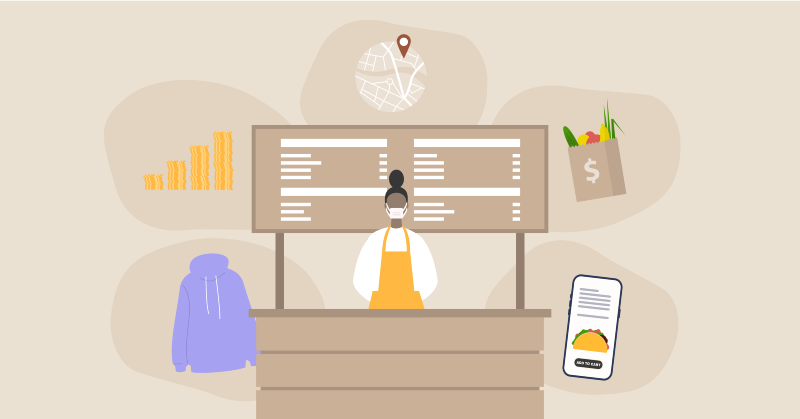
When’s this thing going to end?
Greater Sydney has been in some form of lockdown for 2 months so far, with the rest of the state following suit this weekend, and it’s getting pretty bleak.
We can’t go outside for more than an hour. Staying inside, whilst the safest option, is making us begin to question our sanity and, worst of all, our favourite hospo spots are struggling.
With all hospitality venues now forced to close for everything except takeaways, how can you keep the lights on, and the kitchen open?
It’s not going to be easy to completely change your business model, and pivot to a takeaway place overnight.
For starters, you’re entering the game at literally the same time as everybody else. You’re all going to be vying for the attention of customers in the most saturated takeaway market they’ve ever seen.
Your menu works fine as a dine-in offering, but could be a little bloated to have available for takeaways.
And you’ve got a team of workers who need to keep their income flowing. Without punters to serve at tables, what’s the waitstaff going to do? Who’s your maître d’ going to greet if nobody’s allowed to enter? What good’s a closed bar to a bartender?
Here’s our 4 tips on how to maximise your lockdown profits
- Nail your pivot on the first go
- Add a personal touch
- Expand your offerings
- Broaden your marketing horizons
1. Nail your pivot on the first go
Whether you realise it or not, you’ve already got everything you need to make the best out of your pivot to a takeaway joint.
For example, the NSW Dine & Discover initiative is still available for takeaways, just not if they’re placed via a 3rd party app like Deliveroo, or DoorDash. There’s no better way of getting people’s business than essentially giving them free food (up to the value of $25, of course).
But what about the actual delivery?
 Remember your staff that needed work? If they’ve got a vehicle, they can deliver, and the same goes for you. I’m not saying it’s perfect, but it’s also not going to be permanent, and it beats letting go of your team.
Remember your staff that needed work? If they’ve got a vehicle, they can deliver, and the same goes for you. I’m not saying it’s perfect, but it’s also not going to be permanent, and it beats letting go of your team.
As for your menu, now’s the time to cut the fat, and make it optimal for takeaway. Really hone in on those dishes that travel well and base your menu around those.
Think about it from the customer’s perspective, if they order a dish that you know is best eaten on-site, and they have a bad experience because it hasn’t travelled well, they’re less inclined to order again.
It seems small, but it could be the one thing that pushes them towards a competitor the next time their stomach starts to rumble.
There’s plenty of places still offering their full menus, so this is a real opportunity to establish yourself as the venue that can still deliver high quality at home.
2. Add a personal touch
Just because your customers order via a machine, doesn’t mean we’re not all humans.
And whilst we don’t always want to be reminded that we’re all stuck within a 5km bubble, perhaps it’s time to remind everybody that there’s no place like home. Showcase just how good their local offerings can be.
Or even stick a little thank you note in the bag with people’s food. It may seem like nothing, and a little cheesy, but it shows that you’re people too.
In a time where human connection is limited, it’s an opportunity to remind people that it’s still possible.
3. Expand your offerings
Have you ever had a customer ask “where did you get that ‘ingredient’? I can’t find it in the shops.”
As you’re well aware, having access to wholesale ingredients is a perk of running a hospitality business. Not only can you get stuff that’s hard to find in a regular shop, but you can get it at a much lower price.
So, why not offer it to your customers?
They’ve already shown an interest in purchasing some of the rarer ingredients you use, be the person who offers them a solution. Storage isn’t an issue, you’ve a whole restaurant floor sitting empty, and they’ll remember you as the person who delivered on that one thing that they were struggling to find.
 Look at it this way, you don’t even have to adjust your ordering levels, if you don’t want to. Whatever doesn’t sell directly to the customers can be used in the kitchen, and for things with a longer shelf life, vice versa. Zero wastage, maximum profit.
Look at it this way, you don’t even have to adjust your ordering levels, if you don’t want to. Whatever doesn’t sell directly to the customers can be used in the kitchen, and for things with a longer shelf life, vice versa. Zero wastage, maximum profit.
And remember those dishes you took off the delivery menu because they don’t travel well? How about selling the raw ingredients, along with the recipe, and letting them cook it at home?
Not only will you be able to still (technically) offer more of your menu, but getting the customers involved in making it will give them a special connection to your food. They’ll understand what goes into making their favourite meals, and how it’s put together.
The same goes for your drinks menu too.
Get yourself some bottles, or jars, or even your vacuum sealed bags, and sell your signature cocktails. They’re easy to make in batches, and it’ll give your staff some work, so they can survive.
Your customers are probably in need of a stiff drink, so why not offer them the best in town?
And whilst we’re at it, how’s your merch game?
Never before in human history has the general public worn more comfortable, loungey (is that a word?) clothing so often, so why not give them something to wear whilst they chow down?
Get yourself a great design, and chuck it on t-shirts, hoodies, sweatpants, hats, socks, anything! I know I’m especially guilty of having a wardrobe consisting of about 70% hospo merch, so there’s definitely interest out there (look, I’ll more than likely buy some at least).
It’s a quick sell, literally. If you order a t-shirt online, it’ll take at least a day to reach you. If you tack a t-shirt onto your dinner order, you’ve got it within the hour. That alone is a great selling point.
4. Broaden your marketing horizons
It’s all about keeping that connection with your customers alive, and there’s a load of ways you can do that.
Maybe you fancy yourself the next Gordon Ramsey, or Julia Child? Why not start a cooking channel? It doesn’t have to have the production values of Masterchef, it can be as simple as an Instagram reel, but most importantly, it’ll open a previously closed door for your customers to see how their favourite meals are made by the master.
Not comfortable in front of the camera? How about behind a keyboard?
You can start a blog with some of your recipes, for people to attempt at home. It’ll still give your customers that connection, but without having to see you fluff your lines on camera. Plus, having a successful blog will drive traffic to your website.
Speaking of websites, how’s yours going?
Now’s the time to give it an overhaul, at the very least to make it as accessible as possible to your customers.
Have your new lockdown menu available to order from. Include everything you sell in the same place without the need to switch from screen to screen.
And take away any clutter. You want anybody who visits to be drawn to your menu, that’s where the money is, so make it obvious, and make it clean.
We’re a tough old industry
We’re all hoping for this lockdown to end as soon as possible, but it could mean a few more weeks of everybody staying home, and our doors staying closed.
The entire hospo industry is showing the kind of strength, and resolve that can give us all hope that not only will we see the other side of this, but we’ll have an abundance of ingenious ways to maximise profits whenever times get a little tough.
In short, we may not realise it, but our industry will emerge a lot richer.
And with what may seem like relatively minor efforts, like a simple thank you note for ordering, or something slightly larger, such as adding a de-facto providore section to your business, you can still keep your profits up, keep your team employed, and keep your customers happier than ever.

News you care about. Tips you can use.
Everything your business needs to grow, delivered straight to your inbox.



